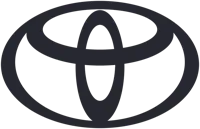Popup Exhibitions
Actual
Archive
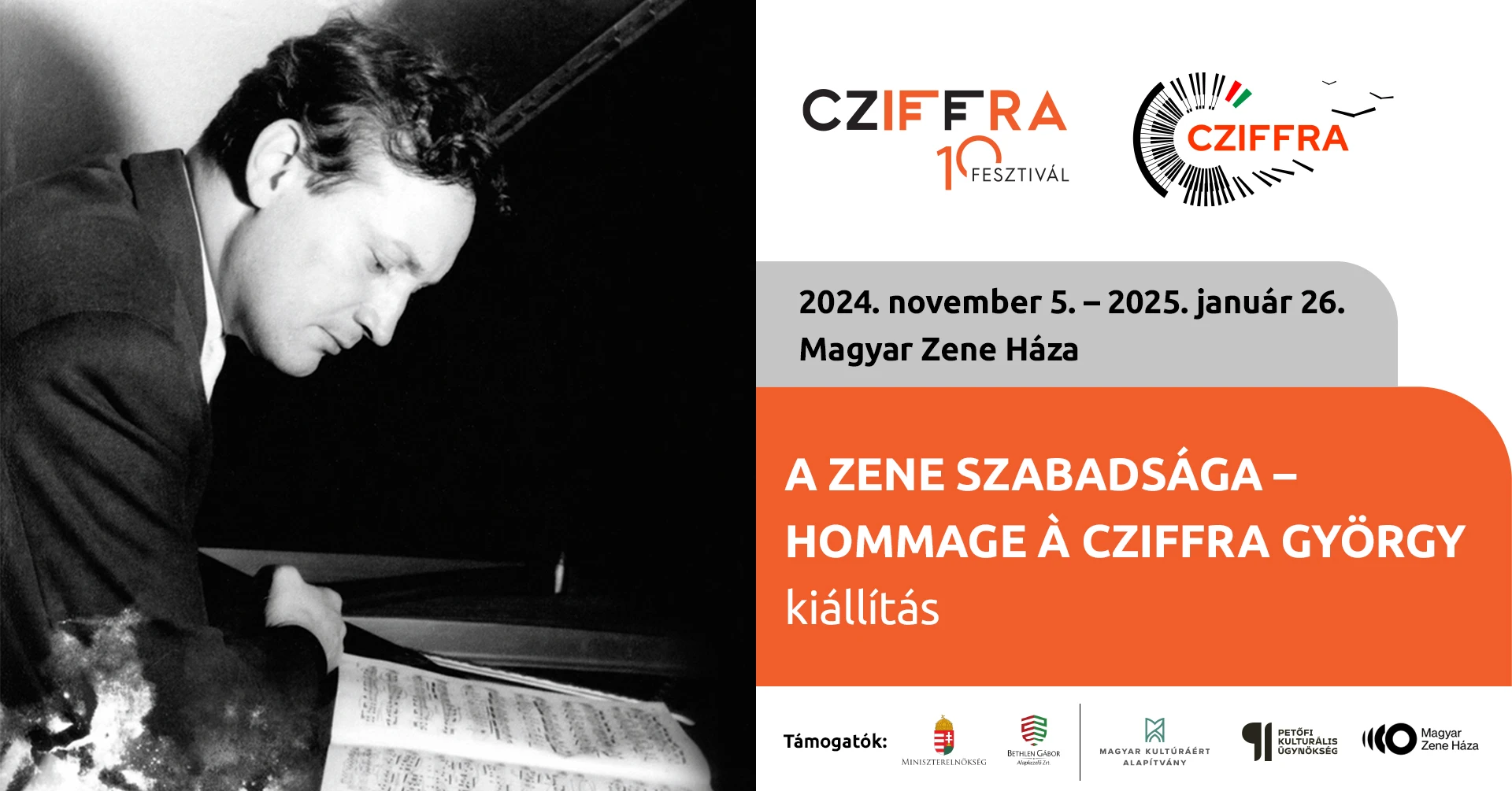
Homage to György Cziffra
The György Cziffra international traveling exhibition is first on display in the Foyer of the House of Hungarian Music. The exhibition, which spectacularly transforms the atrium and is built around a gigantic piano, pays tribute to the world-famous pianist György Cziffra. The installation of the torn apart piano presents the struggles and triumphs of this extraordinary artist and wonderful person through the experience of art.
The exhibition’s two curators are János Balázs, pianist and artistic director of the Cziffra Festival, and András Batta, managing director of the House of Hungarian Music.
Cziffra’s eventful life filled with difficulties, his great international career, unique personality, genius blessed with dazzling improvisational skills, and the spirit of the era are all featured in the free-to-visit pop-up exhibition. The exhibition is part of the Cziffra Festival program series celebrating its 10th anniversary. A related program is also included in the house’s offerings: András Batta's Subjective! lecture series is adapted to examine the Cziffra oeuvre and the question of virtuosity. The World of Virtuosos – The World’s Virtuosos three-part series (October 10, November 26, December 19) reveals, beyond Cziffra, that in a broader sense, every great performer is a virtuoso. A bearer of secrets, intertwined with both the radiant and dark spheres of the transcendental world.
In connection with the exhibition, we will screen a vital documentary by Eszter Petrovics and János Balázs: Cziffra 100 – My Two Hands Are Filled with Happiness (November 12). We aim to present the fate, art, and era of György Cziffra through a deep yet playful, interactive exhibition characteristic of the House of Music, in collaboration with the Ministry of Culture and Innovation, as part of the jubilee Cziffra Festival program series.
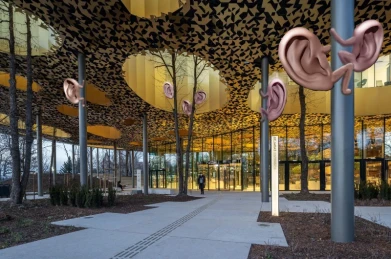
Fülfalka
2024.06.26 -
Szuhay Márton: Fényfestés – Pécs a Házban, Zsolnay
2024.04.26 – 04.28
Homage to György Cziffra
The György Cziffra international traveling exhibition is first on display in the Foyer of the House of Hungarian Music. The exhibition, which spectacularly transforms the atrium and is built around a gigantic piano, pays tribute to the world-famous pianist György Cziffra. The installation of the torn apart piano presents the struggles and triumphs of this extraordinary artist and wonderful person through the experience of art.
The exhibition’s two curators are János Balázs, pianist and artistic director of the Cziffra Festival, and András Batta, managing director of the House of Hungarian Music.
Cziffra’s eventful life filled with difficulties, his great international career, unique personality, genius blessed with dazzling improvisational skills, and the spirit of the era are all featured in the free-to-visit pop-up exhibition. The exhibition is part of the Cziffra Festival program series celebrating its 10th anniversary. A related program is also included in the house’s offerings: András Batta's Subjective! lecture series is adapted to examine the Cziffra oeuvre and the question of virtuosity. The World of Virtuosos – The World’s Virtuosos three-part series (October 10, November 26, December 19) reveals, beyond Cziffra, that in a broader sense, every great performer is a virtuoso. A bearer of secrets, intertwined with both the radiant and dark spheres of the transcendental world.
In connection with the exhibition, we will screen a vital documentary by Eszter Petrovics and János Balázs: Cziffra 100 – My Two Hands Are Filled with Happiness (November 12). We aim to present the fate, art, and era of György Cziffra through a deep yet playful, interactive exhibition characteristic of the House of Music, in collaboration with the Ministry of Culture and Innovation, as part of the jubilee Cziffra Festival program series.
Fülfalka
2024.06.26 -
Szuhay Márton: Fényfestés – Pécs a Házban, Zsolnay
2024.04.26 – 04.28
Tibor Bozi: Face to Face
2024.03.13.-04.21
From March 2024, a selection of portraits of the world's rock and pop stars will fill the Foyer and auditoriums of the House of Music. The pop-up exhibition will present a selection of 40 images from the diverse oeuvre of Tibor Bozi, an international phenomena of music photography. The pop-up exhibition, which accompanies the Diva & Icons exhibition, features a number of divas that the photographer caught before they became real divas.
Tibor Bozi, the internationally renowned Munich-based photographer, has become an inescapable music documentarian and portrait photographer of the last forty years. His camera has captured thousands of musicians and bands from a wide range of genres from rock, pop, hip hop and electronic music. His portfolio includes a long list of the biggest stars, from Beyonce, Björk, Nirvana and Daft Punk to Fiona Apple, Aphex Twin and many more. Bozi is known for capturing strong gestures, capturing accidental or planned movements often caught in just a few minutes of work. The photographer is always looking for the personality behind the bright and colourful images. This intention also shines through in the portraits of performers, often captured at the beginning or the upward phase of their careers, that are exhibited, showing us characters who are now treated as global stars all over the world.
Tibor Bozi left Hungary on an adventurous journey in the trunk of a car in 1977. He has worked in Rome, Barcelona, Caracas, Miami and other cities, and has also made a career as a theatre photographer, working with theatre director Peter Brook, among others.
In the early nineties, fashion photography became his new focus, shooting for magazines such as Vogue, Elle and Harper's Bazaar, and while moving to New York, he met and worked with world-renowned music photographer Lynn Goldsmith in Jamaica. His images from the set of Spike Lee's 1991 film Jungle Fever were bought by Lynn Goldsmith's agency, which offered him a permanent contract. Bozi later settled in Munich, from where he moved to London, and worked for record labels and magazines in the United States. He travelled extensively, taking portraits of musicians, artists and TV personalities - including Dr Dre, Beck, Eminem, Marilyn Manson and Donald Trump, who was on TV shows at the time. His photographs have appeared on the covers of magazines around the world and have been published in the New Yorker and Rolling Stone.
His exhibition Face To Face, opening at the House of Music, shows us portraits of stars such as Beyoncé, Björk, Lauryn Hill, Aaliyah, Alice Cooper, or brings us closer to bands such as Nirvana, the Beastie Boys, Daft Punk or one of the most famous divas of the Hungarian theatre and music world, Bori Péterfy.
Curators: Gábor Szilágyi, Dorottya Ligeti
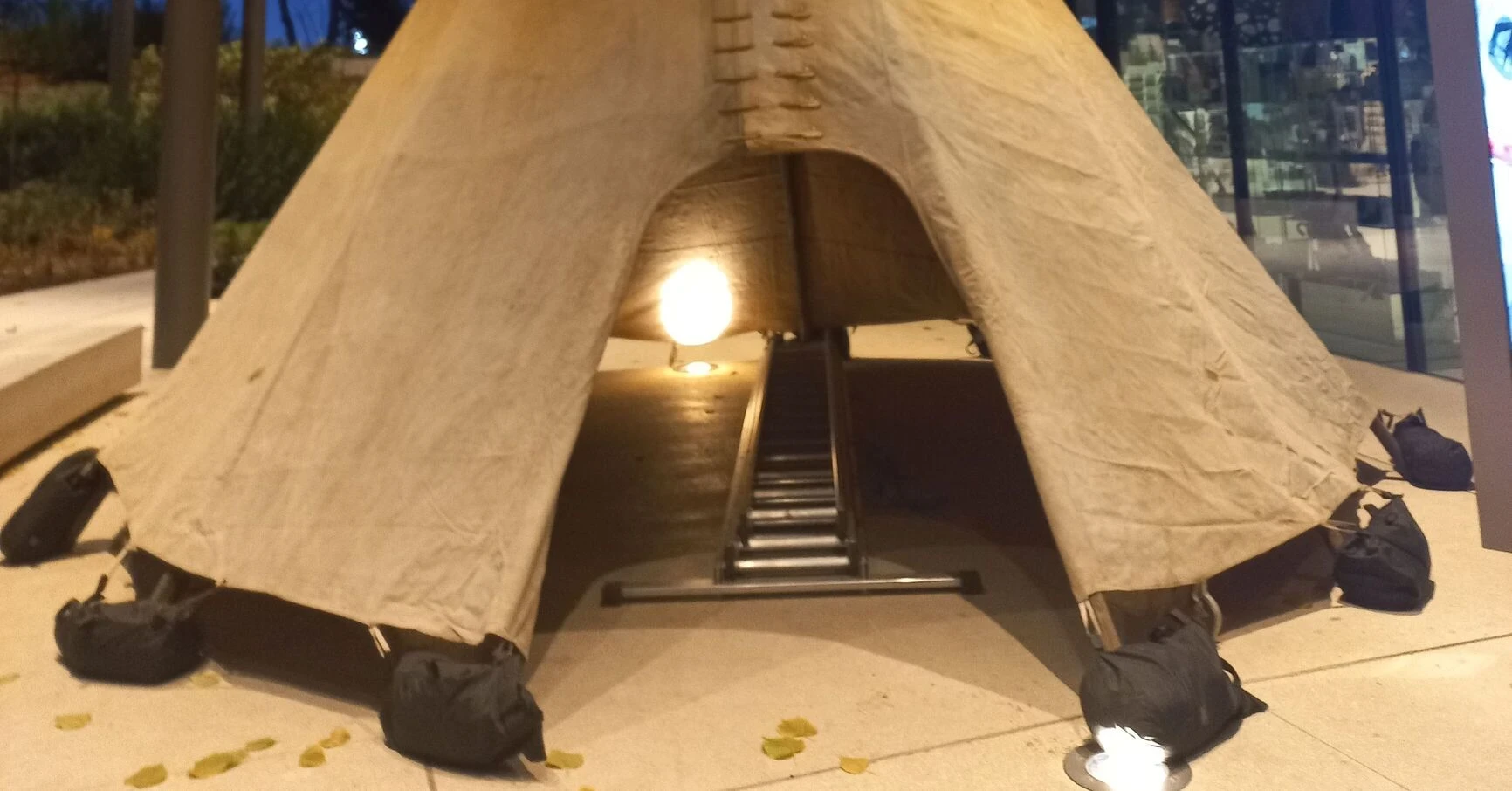
Tamás Cseh 80: Indian Tepee
2023.12.14.-12.11
Tamás Cseh, besides being one of the towering figures of Hungarian pop music and songwriting, was also one of the most influential figures in the Hungarian “Indian” Community. In connection with the anniversary celebration series Tamás Cseh 80, a native American “Indian” teepee will be on display at the entrance to the House of Music between 26 September and 1 October, where photos and descriptions of native American life will be on display, readings will be available, audio recordings will be played and the native American "Indian" will be conjured on film. Originally this was a people of many thousands of tribes with enormous cultural and linguistic diversity, hundreds of which remain today. The installation is on display until 1 October.
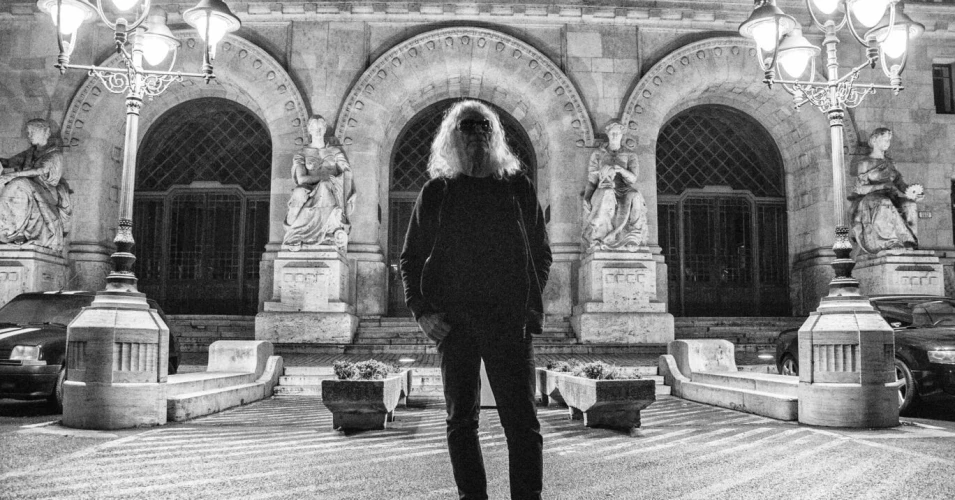
Tibor Bozi: Face to Face
2024.03.13.-04.21
From March 2024, a selection of portraits of the world's rock and pop stars will fill the Foyer and auditoriums of the House of Music. The pop-up exhibition will present a selection of 40 images from the diverse oeuvre of Tibor Bozi, an international phenomena of music photography. The pop-up exhibition, which accompanies the Diva & Icons exhibition, features a number of divas that the photographer caught before they became real divas.
Tibor Bozi, the internationally renowned Munich-based photographer, has become an inescapable music documentarian and portrait photographer of the last forty years. His camera has captured thousands of musicians and bands from a wide range of genres from rock, pop, hip hop and electronic music. His portfolio includes a long list of the biggest stars, from Beyonce, Björk, Nirvana and Daft Punk to Fiona Apple, Aphex Twin and many more. Bozi is known for capturing strong gestures, capturing accidental or planned movements often caught in just a few minutes of work. The photographer is always looking for the personality behind the bright and colourful images. This intention also shines through in the portraits of performers, often captured at the beginning or the upward phase of their careers, that are exhibited, showing us characters who are now treated as global stars all over the world.
Tibor Bozi left Hungary on an adventurous journey in the trunk of a car in 1977. He has worked in Rome, Barcelona, Caracas, Miami and other cities, and has also made a career as a theatre photographer, working with theatre director Peter Brook, among others.
In the early nineties, fashion photography became his new focus, shooting for magazines such as Vogue, Elle and Harper's Bazaar, and while moving to New York, he met and worked with world-renowned music photographer Lynn Goldsmith in Jamaica. His images from the set of Spike Lee's 1991 film Jungle Fever were bought by Lynn Goldsmith's agency, which offered him a permanent contract. Bozi later settled in Munich, from where he moved to London, and worked for record labels and magazines in the United States. He travelled extensively, taking portraits of musicians, artists and TV personalities - including Dr Dre, Beck, Eminem, Marilyn Manson and Donald Trump, who was on TV shows at the time. His photographs have appeared on the covers of magazines around the world and have been published in the New Yorker and Rolling Stone.
His exhibition Face To Face, opening at the House of Music, shows us portraits of stars such as Beyoncé, Björk, Lauryn Hill, Aaliyah, Alice Cooper, or brings us closer to bands such as Nirvana, the Beastie Boys, Daft Punk or one of the most famous divas of the Hungarian theatre and music world, Bori Péterfy.
Curators: Gábor Szilágyi, Dorottya Ligeti
Tamás Cseh 80: Indian Tepee
2023.12.14.-12.11
Tamás Cseh, besides being one of the towering figures of Hungarian pop music and songwriting, was also one of the most influential figures in the Hungarian “Indian” Community. In connection with the anniversary celebration series Tamás Cseh 80, a native American “Indian” teepee will be on display at the entrance to the House of Music between 26 September and 1 October, where photos and descriptions of native American life will be on display, readings will be available, audio recordings will be played and the native American "Indian" will be conjured on film. Originally this was a people of many thousands of tribes with enormous cultural and linguistic diversity, hundreds of which remain today. The installation is on display until 1 October.
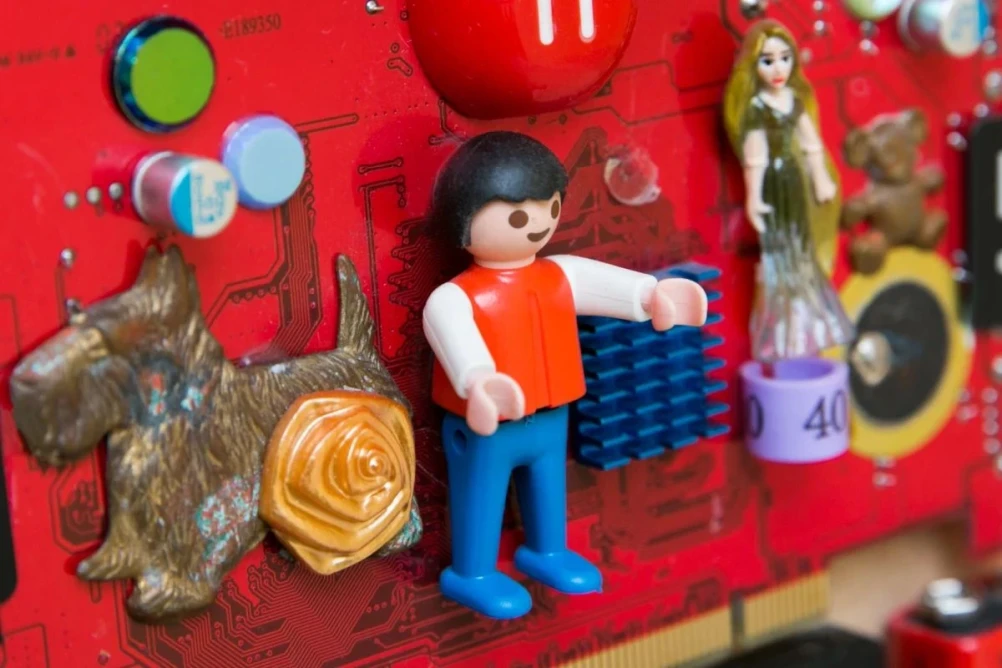
Bp. György Szabó Object Sounds Installation + Poster Collection + CD Artworks
2023.09.27.-11.19
The artist and musician Bp. György Szabó has been creating a conceptual framework with his legendary industrial-noise band Bp.Service since the eighties and nineties. From the outset, they collected urban sounds and noise residues, in the spirit of the currently fashionable soundscapes and were "the city's sound interpreters and dubbers." The works by Bp. György Szabó exhibited here also explore the issues around "leftovers", "functionless", "unused", juxtaposing the unnecessary, but not as yet discarded objects from everyday life with equally functionless background noise.
Those things that are constantly there in the background, those are useless for us, and have no real function, but we hear them anyway. The exhibition consists of six independent but interlinked pieces. Each of these six works is accompanied by a radio. Occasionally, the artifacts of metropolitan life meet up with the sound threads from randomly blaring radios.
"I incorporate the waste/unused objects from our immediate environment into my works, selecting them so that dozens of objects in a fresh context carry their own message. It is a corollary of the visual object chaos of everyday life, a by-product of metropolitan life, a functionless, harmonious selection of unbridled consumption."
The Bp. György Szabó popup exhibition is on the -2 level:
- Bp. György Szabó CD artefacts Disuse is also reflected in CD artefacts, a hundred prepared CD discs have lost their original function in the digital age, and while they have not yet been discarded, they no longer serve any function, just like the small objects attached to them.
- Bp. György Szabó poster collection As a fine artist, Bp. György Szabó designed concert posters for numerous new wave bands, but he also collected many posters that advertised live performances in the 1980s. This is a selection of them.
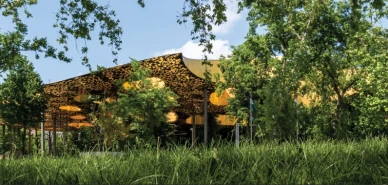
In 2023, it will be one hundred years since the Kossuth Prize-winning Hungarian composer György Ligeti was born. The jubilee year is connected with a series of events called Ligeti 100, which starts with this event at the Hungarian House of Music.
Ligeti a Ligetben
2023.09.27
In 2023, it will be one hundred years since the Kossuth Prize-winning Hungarian composer György Ligeti was born. The jubilee year is connected with a series of events called Ligeti 100, which starts with this event at the Hungarian House of Music.
EJTECH Textile Exhibition
2023.09.06.-09.19.
DUNG DKAR CLOAK Interactive installation, 2023 Touch and explore the textile in order to generate a unique soundscape, shaped by the gestures and delicate tactile wandering throughout the woven interface. Dung Dkar Cloak is a soft interface for intuitive musical interactions. It is a fractal tapestry augmented in order to create an intimate explorative material experience. Textiles as the metaphor that strings together the macrocosm and microcosm, the interwoven reflection of interpersonal relationships, the linking of vertices and edges to create a network, our second skin and the next interface for human-computer interactions. Through the evolutions of the cosmos, we are the story of matter being told to itself. Growth and pattern are innate in matter. Without a designer, matter continuously shapes itself into the infinite fractal tapestry of our universe - every pebble, every mountain, every life. Dung Dkar Cloak is developed within the Innovation Center of the Moholy-Nagy University of Art and Design in Budapest, Hungary (MOME-IK). This work is part of the ongoing research on new augmented materials, specifically soft interfaces as an intuitive, non-intrusive platform between digital environment and the physical world. Artists Judit Eszter Kárpáti, PhD and Esteban de la Torre are an interdisciplinary duo under the name EJTECH, and academic researchers at the Moholy-Nagy University of Art and Design. They are working with hyperphysical interfaces and programmable matter as media to investigate sensorial and conceptual relationships between subject and object, aiming to rediscover networks of emerging structures and immanent causality within realist metamaterialism.
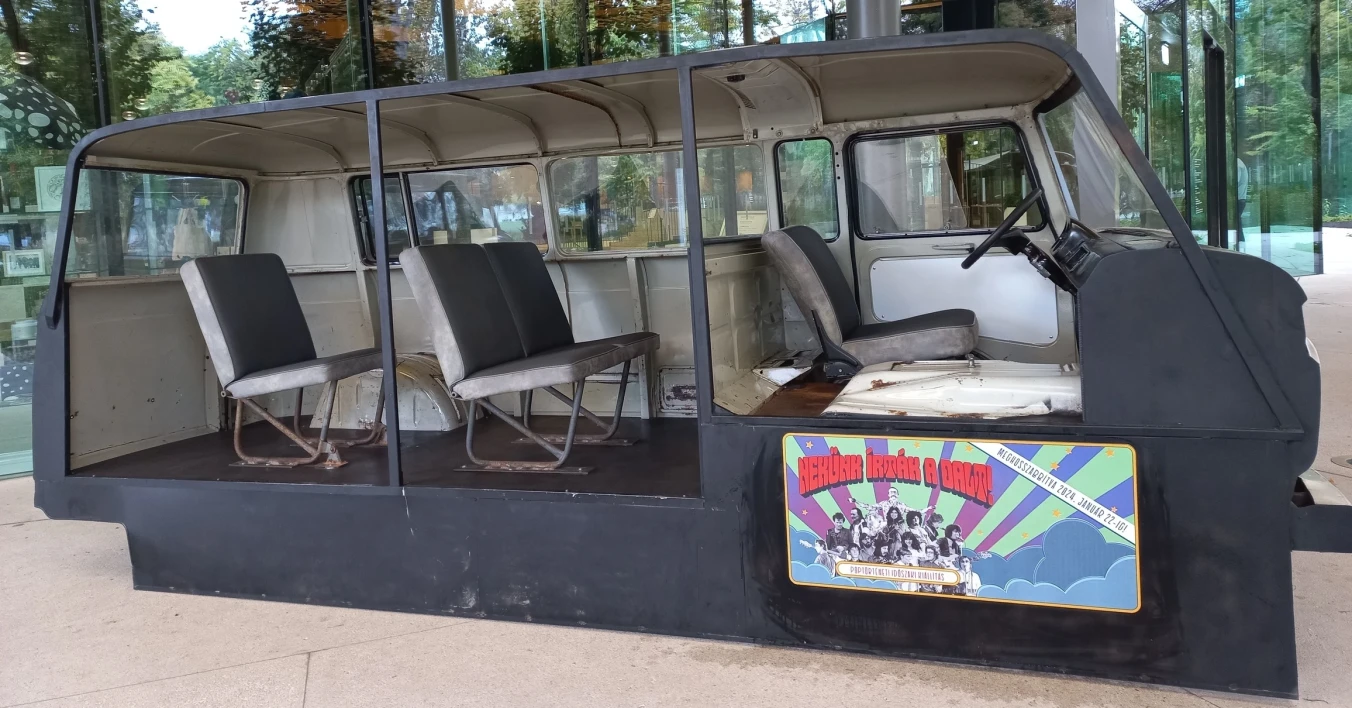
Barkas BP Park - 2023.07.10-10.26
Barkas - BP Park
Bp. György Szabó Object Sounds Installation + Poster Collection + CD Artworks
2023.09.27.-11.19
The artist and musician Bp. György Szabó has been creating a conceptual framework with his legendary industrial-noise band Bp.Service since the eighties and nineties. From the outset, they collected urban sounds and noise residues, in the spirit of the currently fashionable soundscapes and were "the city's sound interpreters and dubbers." The works by Bp. György Szabó exhibited here also explore the issues around "leftovers", "functionless", "unused", juxtaposing the unnecessary, but not as yet discarded objects from everyday life with equally functionless background noise.
Those things that are constantly there in the background, those are useless for us, and have no real function, but we hear them anyway. The exhibition consists of six independent but interlinked pieces. Each of these six works is accompanied by a radio. Occasionally, the artifacts of metropolitan life meet up with the sound threads from randomly blaring radios.
"I incorporate the waste/unused objects from our immediate environment into my works, selecting them so that dozens of objects in a fresh context carry their own message. It is a corollary of the visual object chaos of everyday life, a by-product of metropolitan life, a functionless, harmonious selection of unbridled consumption."
The Bp. György Szabó popup exhibition is on the -2 level:
- Bp. György Szabó CD artefacts Disuse is also reflected in CD artefacts, a hundred prepared CD discs have lost their original function in the digital age, and while they have not yet been discarded, they no longer serve any function, just like the small objects attached to them.
- Bp. György Szabó poster collection As a fine artist, Bp. György Szabó designed concert posters for numerous new wave bands, but he also collected many posters that advertised live performances in the 1980s. This is a selection of them.
In 2023, it will be one hundred years since the Kossuth Prize-winning Hungarian composer György Ligeti was born. The jubilee year is connected with a series of events called Ligeti 100, which starts with this event at the Hungarian House of Music.
Ligeti a Ligetben
2023.09.27
In 2023, it will be one hundred years since the Kossuth Prize-winning Hungarian composer György Ligeti was born. The jubilee year is connected with a series of events called Ligeti 100, which starts with this event at the Hungarian House of Music.
EJTECH Textile Exhibition
2023.09.06.-09.19.
DUNG DKAR CLOAK Interactive installation, 2023 Touch and explore the textile in order to generate a unique soundscape, shaped by the gestures and delicate tactile wandering throughout the woven interface. Dung Dkar Cloak is a soft interface for intuitive musical interactions. It is a fractal tapestry augmented in order to create an intimate explorative material experience. Textiles as the metaphor that strings together the macrocosm and microcosm, the interwoven reflection of interpersonal relationships, the linking of vertices and edges to create a network, our second skin and the next interface for human-computer interactions. Through the evolutions of the cosmos, we are the story of matter being told to itself. Growth and pattern are innate in matter. Without a designer, matter continuously shapes itself into the infinite fractal tapestry of our universe - every pebble, every mountain, every life. Dung Dkar Cloak is developed within the Innovation Center of the Moholy-Nagy University of Art and Design in Budapest, Hungary (MOME-IK). This work is part of the ongoing research on new augmented materials, specifically soft interfaces as an intuitive, non-intrusive platform between digital environment and the physical world. Artists Judit Eszter Kárpáti, PhD and Esteban de la Torre are an interdisciplinary duo under the name EJTECH, and academic researchers at the Moholy-Nagy University of Art and Design. They are working with hyperphysical interfaces and programmable matter as media to investigate sensorial and conceptual relationships between subject and object, aiming to rediscover networks of emerging structures and immanent causality within realist metamaterialism.
Barkas BP Park - 2023.07.10-10.26
Barkas - BP Park
-webp.webp)
„Nyisd ki a szemed!” – A KFT együttes történetét bemutató kiállítás megnyitója
2023.06.01 – 06.16
'Open your eyes!' - Opening of the exhibition on the history of the KFT band
Kokesch Ádám - Untitled - Köztes állapot
2023.05.02. - 06.25.
SHINE – Opening of Emese Benczúr's art installation
2022.12.13-03.27.
Emese Benczúr, an artist awarded the Munkácsy Prize, showcased her installation titled SHINE in the Foyer of the House of Music. The exhibition's opening was held on December 13th at 6 PM. The audience has seen the artist's works, which incorporate texts and messages, at many domestic and international exhibitions, including the Venice and Liverpool Biennales. She regularly participates in both group and individual exhibitions, as well as domestic and international art events, and her works can be found in several major private and institutional collections (MUSAC, Ludwig Collection). The exhibition was opened by Nóra Winkler.
Her works feature texts and short slogans, which, combined with material usage and unique techniques, reveal the complexity of her creations. She meticulously crafts her artworks, where transience and vulnerability play important roles. These installations are primarily constructed from trivial materials, engaging the viewer in manifold associations (candy wrappers, earrings, confetti, gold chains). For Emese, creating each piece is a lengthy process, a form of meditation, resulting in painstaking handicraft, which the audience can also sense. The word "shine" takes a central role in several of her creations, where she explores its various meanings. Art helps reinterpret our surrounding environment, enabling us to perceive the brilliance and intimacy in everyday life that we seek during our celebrations.
"For me, the text carries a tangible, concrete message and has played a central role in my works from the very beginning. Whether a spoken word truly reflects the truth is another question. If something is written down, it becomes more believable. I often use clichéd sentences and words because I believe they still contain their original meaning. Despite becoming banal over time, there is a depth that holds its true essence." – Emese Benczúr
„Nyisd ki a szemed!” – A KFT együttes történetét bemutató kiállítás megnyitója
2023.06.01 – 06.16
'Open your eyes!' - Opening of the exhibition on the history of the KFT band
Kokesch Ádám - Untitled - Köztes állapot
2023.05.02. - 06.25.
SHINE – Opening of Emese Benczúr's art installation
2022.12.13-03.27.
Emese Benczúr, an artist awarded the Munkácsy Prize, showcased her installation titled SHINE in the Foyer of the House of Music. The exhibition's opening was held on December 13th at 6 PM. The audience has seen the artist's works, which incorporate texts and messages, at many domestic and international exhibitions, including the Venice and Liverpool Biennales. She regularly participates in both group and individual exhibitions, as well as domestic and international art events, and her works can be found in several major private and institutional collections (MUSAC, Ludwig Collection). The exhibition was opened by Nóra Winkler.
Her works feature texts and short slogans, which, combined with material usage and unique techniques, reveal the complexity of her creations. She meticulously crafts her artworks, where transience and vulnerability play important roles. These installations are primarily constructed from trivial materials, engaging the viewer in manifold associations (candy wrappers, earrings, confetti, gold chains). For Emese, creating each piece is a lengthy process, a form of meditation, resulting in painstaking handicraft, which the audience can also sense. The word "shine" takes a central role in several of her creations, where she explores its various meanings. Art helps reinterpret our surrounding environment, enabling us to perceive the brilliance and intimacy in everyday life that we seek during our celebrations.
"For me, the text carries a tangible, concrete message and has played a central role in my works from the very beginning. Whether a spoken word truly reflects the truth is another question. If something is written down, it becomes more believable. I often use clichéd sentences and words because I believe they still contain their original meaning. Despite becoming banal over time, there is a depth that holds its true essence." – Emese Benczúr
Zsanett Szirmai: Touch of Japan – Soundweaving 8.0
2022.09.02 – 09.14.
The Soundweaving is an interdisciplinary, integrative project that revolves around the punched card-music box transcription of traditional folk patterns and their sonic representation. In this case, the punch tape serves as the musical score. During the transformation, the patterns become laser-cut textiles, and the motifs transform into melodies. Soundweaving simultaneously stimulates multiple senses and invites interaction. The textile and sound installation, which challenges conventional genre boundaries, presents the melodic and motif worlds of different continents.
Soundweaving engages all the senses simultaneously and invites interaction. The project, merging the border regions of folk art, design, and music, employs various media and communicates on multiple levels. It belongs to both the analog and digital worlds. The visual realm is represented in an auditory manner within the project, and the graphical character of music plays a role in the construction of the melodies. The pixel-graphic transcription compatible with a binary code system is the unique idea of textile artist Zsanett Szirmay. Soundweaving has been featured at several European and Middle Eastern innovation and post-digital design weeks, including the Vienna Design Week, Dubai Design Week, Lodz Design Week, the One Design Week in Plovdiv (Being Post Digital), and the Brain Bar Budapest Festival. The Silk Treasures Azerbaijani edition is a Soundweaving adaptation of the Islamic carpet collection in the Victoria & Albert Museum - V&A Museum London.
In 2018, the project commissioned by the Pergamon Museum Staatliche Museen zu Berlin was showcased at the Pergamon Museum in Berlin. The Soundweaving 7.0 – Pergamon Edition is an adaptation of the Pergamon Museum's tapestry collection. Throughout the transformation, the tapestries transform into laser-cut textiles, and the tapestry patterns become melodies with the help of the music box. The Soundweaving Japan Edition textile patterns were inspired by the motifs of katagami, katazome, and kimonos. Among the punch tape patterns, the traditional Japanese song Sakura-Sakura is also played. In 2018, melodies and textile installations were created from the folk art motifs of the Visegrad 4 countries. The resulting Soundweaving V4 Edition has also been featured in Prague, Bratislava, Warsaw, Lodz, and Budapest as part of the Hungarian V4 presidency's cultural and scientific program series.
The musical transcription of the patterns was turned into one-minute etudes by musicians and composers Bálint Tárkány-Kovács and Dániel Vikukel. Soundweaving expands the collections of several international museums, including the Pergamon Museum, Staatliche Museen zu Berlin, the National Museum of Azerbaijan, and the Donauschwäbisches Zentralmuseum Ulm. The textile installation has been featured in numerous international and design magazines, such as Domus, Wallpaper, Dezeen, Colossal, Wired, Smithsonian New York magazine, Magyar Design Yearbook, Book of Design, and in selections by BBC Radio. With its appearance at the Dubai Design Week, the project was featured among the top 5 installations and among the most progressive creations at the Milan design festival. Soundweaving, now in its eighth edition, has been presented in Europe, Asia, and the Middle East with the support of Hybridart Management, Moholy-Nagy University of Art and Design, Ybl Creative House, and the Hungarian Ministry of Foreign Affairs.
The exhibition was opened by Rita Halasi Mária, design expert, on September 2nd at 19:00.
Zsanett Szirmai: Touch of Japan – Soundweaving 8.0
2022.09.02 – 09.14.
The Soundweaving is an interdisciplinary, integrative project that revolves around the punched card-music box transcription of traditional folk patterns and their sonic representation. In this case, the punch tape serves as the musical score. During the transformation, the patterns become laser-cut textiles, and the motifs transform into melodies. Soundweaving simultaneously stimulates multiple senses and invites interaction. The textile and sound installation, which challenges conventional genre boundaries, presents the melodic and motif worlds of different continents.
Soundweaving engages all the senses simultaneously and invites interaction. The project, merging the border regions of folk art, design, and music, employs various media and communicates on multiple levels. It belongs to both the analog and digital worlds. The visual realm is represented in an auditory manner within the project, and the graphical character of music plays a role in the construction of the melodies. The pixel-graphic transcription compatible with a binary code system is the unique idea of textile artist Zsanett Szirmay. Soundweaving has been featured at several European and Middle Eastern innovation and post-digital design weeks, including the Vienna Design Week, Dubai Design Week, Lodz Design Week, the One Design Week in Plovdiv (Being Post Digital), and the Brain Bar Budapest Festival. The Silk Treasures Azerbaijani edition is a Soundweaving adaptation of the Islamic carpet collection in the Victoria & Albert Museum - V&A Museum London.
In 2018, the project commissioned by the Pergamon Museum Staatliche Museen zu Berlin was showcased at the Pergamon Museum in Berlin. The Soundweaving 7.0 – Pergamon Edition is an adaptation of the Pergamon Museum's tapestry collection. Throughout the transformation, the tapestries transform into laser-cut textiles, and the tapestry patterns become melodies with the help of the music box. The Soundweaving Japan Edition textile patterns were inspired by the motifs of katagami, katazome, and kimonos. Among the punch tape patterns, the traditional Japanese song Sakura-Sakura is also played. In 2018, melodies and textile installations were created from the folk art motifs of the Visegrad 4 countries. The resulting Soundweaving V4 Edition has also been featured in Prague, Bratislava, Warsaw, Lodz, and Budapest as part of the Hungarian V4 presidency's cultural and scientific program series.
The musical transcription of the patterns was turned into one-minute etudes by musicians and composers Bálint Tárkány-Kovács and Dániel Vikukel. Soundweaving expands the collections of several international museums, including the Pergamon Museum, Staatliche Museen zu Berlin, the National Museum of Azerbaijan, and the Donauschwäbisches Zentralmuseum Ulm. The textile installation has been featured in numerous international and design magazines, such as Domus, Wallpaper, Dezeen, Colossal, Wired, Smithsonian New York magazine, Magyar Design Yearbook, Book of Design, and in selections by BBC Radio. With its appearance at the Dubai Design Week, the project was featured among the top 5 installations and among the most progressive creations at the Milan design festival. Soundweaving, now in its eighth edition, has been presented in Europe, Asia, and the Middle East with the support of Hybridart Management, Moholy-Nagy University of Art and Design, Ybl Creative House, and the Hungarian Ministry of Foreign Affairs.
The exhibition was opened by Rita Halasi Mária, design expert, on September 2nd at 19:00.


